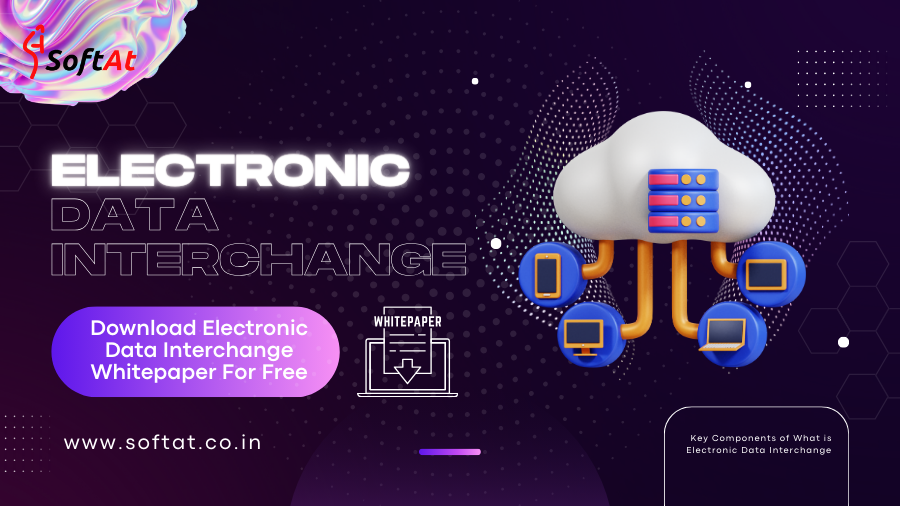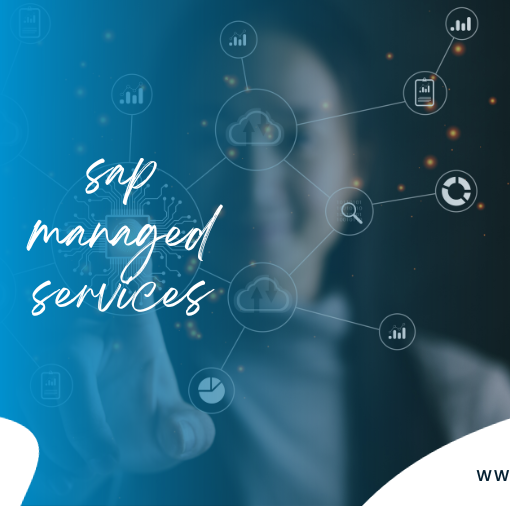In today’s fast-paced digital world, businesses are constantly seeking ways to streamline their operations and improve efficiency. What is Electronic data interchange (EDI), a technology that facilitates the exchange of business documents between organizations in a standardized electronic format, has become a popular solution in this context.
![]()
EDI enables seamless communication between different computer systems, eliminating the need for manual data entry and reducing the risk of errors. It allows businesses to exchange a variety of documents, such as purchase orders, invoices, and shipping notices, effortlessly and securely.
By adopting EDI, organizations can enhance their supply chain management, improve order accuracy, and accelerate business processes. This technology not only saves time but also reduces costs associated with paper-based documentation and manual processing.
In this article, we will delve deeper into the concept of What is Electronic Data Interchange, exploring its benefits, implementation challenges, and best practices. Whether you are a business owner looking to streamline your operations or an IT professional interested in understanding EDI, this article will provide you with valuable insights into this powerful technology.
History and Evolution of EDI
The concept of What is Electronic Data Interchange originated in the 1960s when businesses started exploring ways to automate their paper-based processes. Initially, EDI was primarily used by large corporations and government agencies that had the resources to develop custom solutions. However, advancements in technology and the emergence of standardized formats led to the widespread adoption of EDI across industries.
In the early days, EDI was primarily based on proprietary communication protocols and formats, making it difficult for organizations to exchange data with their partners. However, the introduction of standardization initiatives, such as ANSI ASC X12 and UN/EDIFACT, paved the way for seamless inter-organizational communication.
Over the years, EDI has continued to evolve, leveraging advancements in technology to enhance its capabilities. The introduction of internet-based protocols, such as AS2 and FTP, made EDI accessible to a wider range of organizations. Additionally, the adoption of XML-based formats, such as ebXML, enabled more flexible data exchange and improved interoperability.
Today, EDI has become an integral part of modern business operations, enabling organizations of all sizes to exchange critical business information quickly and securely.
Key Components of What is Electronic Data Interchange
EDI involves the exchange of structured data between trading partners, enabling them to automate their business processes. To understand how EDI works, it is essential to familiarize yourself with its key components.
- Standards: EDI relies on standardized formats to ensure seamless communication between different systems. Common EDI standards include ANSI ASC X12, UN/EDIFACT, and XML-based formats like ebXML. These standards define the structure and syntax of the data being exchanged, ensuring compatibility between trading partners.
- Data Mapping: Data mapping is the process of transforming data from one format to another to ensure compatibility between different systems. It involves mapping the data elements of one EDI standard to those of another, enabling seamless data exchange. Data mapping can be a complex process that requires careful consideration of the data structures and business rules involved.
- Translation Software: Translation software is used to convert data from the internal format used by an organization’s systems to the EDI standard format and vice versa. It plays a crucial role in ensuring the accurate and efficient exchange of data between trading partners.
- Communication Protocols: EDI relies on various communication protocols to facilitate the secure transmission of data between different systems. Common protocols include AS2 (Applicability Statement 2), FTP (File Transfer Protocol), and VANs (Value Added Networks). These protocols ensure that data is transmitted reliably and securely, protecting it from unauthorized access and ensuring its integrity.
By understanding these key components of EDI, organizations can effectively implement and leverage the technology to optimize their business processes.
Benefits of Implementing EDI in Businesses
Implementing EDI offers numerous benefits to businesses across industries. Let’s explore some of the key advantages:
- Cost Savings: EDI eliminates the need for manual data entry and paper-based documentation, resulting in significant cost savings. By automating data exchange processes, businesses can reduce labor costs, minimize errors, and decrease the need for physical storage space.
- Increased Efficiency: With EDI, businesses can streamline their operations and accelerate their business processes. By eliminating manual data entry and reducing the risk of errors, organizations can process orders, invoices, and other documents more quickly, resulting in improved efficiency and customer satisfaction.
- Enhanced Accuracy: Manual data entry is prone to errors, which can have a significant impact on business operations. EDI eliminates the risk of transcription errors by enabling the direct transfer of data between systems. This ensures the accuracy and integrity of the data being exchanged, reducing the need for manual interventions and improving overall data quality.
- Improved Supply Chain Management: EDI enables seamless collaboration and communication between trading partners, enhancing supply chain management. By automating the exchange of documents, such as purchase orders and shipping notices, organizations can optimize inventory management, reduce lead times, and improve order fulfillment.
- Competitive Advantage: In today’s competitive business landscape, organizations need to stay ahead of the curve. Implementing EDI can give businesses a competitive advantage by enabling faster and more efficient communication with trading partners. This allows them to respond quickly to customer demands, optimize their supply chain, and gain a reputation for reliability and efficiency.
By leveraging the benefits of EDI, businesses can optimize their operations, improve customer satisfaction, and gain a competitive edge in the market.
Common EDI Standards and Protocols
EDI relies on standardized formats and protocols to ensure seamless data exchange between organizations. Let’s explore some of the common EDI standards and protocols used in the industry:
- ANSI ASC X12: ANSI ASC X12 is a widely adopted standard for EDI in North America. It defines the structure and syntax of various business documents, such as purchase orders, invoices, and shipping notices. The ANSI ASC X12 standard is used across industries, including retail, healthcare, and manufacturing.
- UN/EDIFACT: UN/EDIFACT is a global standard developed by the United Nations to enable electronic data interchange between trading partners worldwide. It is used extensively in Europe and other regions outside of North America.
- XML-based Formats: XML (eXtensible Markup Language) has gained popularity as a flexible format for data exchange. It allows organizations to define their own data structures and tags, making it suitable for diverse business requirements. XML-based formats like ebXML (Electronic Business using eXtensible Markup Language) provide a standardized way to exchange business documents in XML format.
In addition to standards, EDI relies on various communication protocols to facilitate the secure transmission of data. Some common protocols include:
- AS2 (Applicability Statement 2): AS2 is an internet-based protocol that enables secure and reliable data exchange between trading partners. It uses digital certificates and encryption to ensure data confidentiality and integrity during transmission.
- FTP (File Transfer Protocol): FTP is a standard network protocol used for the transfer of files between systems. It is commonly used for EDI data exchange, especially when security requirements are not as stringent.
- VANs (Value Added Networks): VANs are third-party service providers that facilitate EDI communication between trading partners. They act as intermediaries, ensuring the secure transmission and delivery of EDI messages.
By understanding the common EDI standards and protocols, organizations can choose the most suitable options for their specific business needs.
What is Electronic Data Interchange Implementation Process and Considerations
Implementing EDI requires careful planning and consideration to ensure a successful deployment. Let’s explore the typical steps involved in the EDI implementation process:
- Needs Assessment: The first step in the implementation process is to assess the organization’s needs and identify the business processes that can benefit from EDI. This involves evaluating existing workflows, identifying pain points, and determining the scope of the implementation.
- Partner Selection: Organizations need to identify trading partners who are willing to adopt EDI and establish communication channels with them. This may involve selecting VANs or agreeing on communication protocols with trading partners.
- System Integration: Integrating EDI into existing systems is a critical step in the implementation process. This involves mapping data structures, configuring translation software, and establishing connections with trading partners’ systems. System integration may require collaboration between IT teams, business stakeholders, and external service providers.
- Testing and Validation: Before going live, it is essential to thoroughly test the EDI implementation to ensure its accuracy and reliability. This involves exchanging test messages with trading partners, validating the data integrity, and addressing any issues that arise.
- Training and Support: Once the EDI system is implemented, it is crucial to provide training to users and support them during the transition. This includes educating employees on how to use the EDI system, addressing any questions or concerns, and providing ongoing support to ensure a smooth transition.
During the implementation process, organizations need to consider several factors, including:
- Scalability: EDI implementations should be scalable to accommodate future growth and expansion. Organizations should consider their long-term needs and select solutions that can scale with their business.
- Compliance Requirements: Depending on the industry, organizations may need to comply with specific regulations and standards. It is essential to ensure that the selected EDI solution meets these requirements to avoid any compliance issues.
- Security: EDI involves the exchange of sensitive business information, making security a top priority. Organizations should implement robust security measures, such as encryption and access controls, to protect data during transmission and storage.
- Integration with Existing Systems: EDI implementation should seamlessly integrate with existing systems, including ERP (Enterprise Resource Planning) and CRM (Customer Relationship Management) systems. This integration ensures data consistency and eliminates the need for manual data entry.
By following these best practices and considering the key factors, organizations can successfully implement EDI and unlock its full potential.
Challenges and Risks of EDI Adoption
While EDI offers numerous benefits, organizations need to be aware of the challenges and risks associated with its adoption. Let’s explore some of the common challenges:
- Complexity: EDI implementation can be complex, requiring technical expertise and careful planning. Organizations need to invest time and resources in understanding the technology, selecting the right solutions, and integrating them into existing systems.
- Trading Partner Readiness: EDI adoption requires collaboration with trading partners who should be willing and ready to adopt the technology. Organizations may face challenges in convincing partners to embrace EDI, especially if they are not familiar with the technology or lack the resources to implement it.
- Data Quality and Integrity: EDI relies on the accurate and consistent exchange of data between systems. Any discrepancies or errors in the data can have significant consequences. Organizations need to ensure data quality and integrity by implementing validation checks, error handling mechanisms, and data reconciliation processes.
- Cost and ROI: While EDI can lead to cost savings in the long run, the initial investment and ongoing maintenance costs can be significant. Organizations need to carefully evaluate the costs and potential return on investment (ROI) before committing to EDI implementation.
- System Compatibility: EDI requires compatibility between different systems and trading partners. Organizations may face challenges in ensuring that their systems can seamlessly exchange data with partners who may use different EDI standards or protocols.
Despite these challenges, organizations can mitigate risks and overcome obstacles by partnering with experienced EDI service providers, investing in training and support, and conducting thorough testing and validation.
EDI vs Traditional Paper-Based Communication
EDI offers several advantages over traditional paper-based communication methods. Let’s compare the two approaches:
- Efficiency: EDI automates data exchange processes, eliminating the need for manual data entry and paperwork. This results in faster and more efficient communication, reducing processing times and enabling real-time visibility into business transactions.
- Accuracy: Paper-based processes are prone to errors due to manual data entry and transcription. EDI eliminates the risk of errors by enabling the direct transfer of data between systems, ensuring accuracy and data integrity.
- Cost Savings: Paper-based communication involves printing, mailing, and storage costs. EDI eliminates these costs by digitizing the exchange of documents, resulting in significant cost savings over time.
- Environmental Impact: EDI reduces the reliance on paper, contributing to environmental sustainability. By eliminating the need for paper-based documentation, organizations can reduce their carbon footprint and promote a greener business environment.
- Security: EDI offers enhanced security compared to traditional paper-based communication. Data transmitted through EDI is encrypted, ensuring confidentiality and protecting it from unauthorized access. Additionally, EDI provides an audit trail, enabling organizations to track the movement of data and identify any potential security breaches.
- Scalability: EDI can easily scale to accommodate increasing data volumes and business growth. Traditional paper-based processes may struggle to handle larger volumes of data, leading to bottlenecks and inefficiencies.
While traditional paper-based communication methods may still be prevalent in some industries, adopting EDI can provide organizations with a competitive advantage, improve operational efficiency, and reduce costs.
EDI Software and Service Providers
Implementing EDI requires specialized software and services to facilitate the exchange of data. Let’s explore some of the popular EDI software and service providers:
- IBM Sterling: IBM Sterling offers a comprehensive suite of EDI solutions, including translation software, communication protocols, and managed services. Their solutions cater to organizations of all sizes and industries, providing seamless integration with existing systems.
- SPS Commerce: SPS Commerce is a leading provider of cloud-based EDI solutions. Their platform enables organizations to connect with trading partners, automate data exchange processes, and gain real-time visibility into supply chain transactions.
- TrueCommerce: TrueCommerce offers a wide range of EDI solutions, including translation software, communication protocols, and managed services. Their platform integrates with popular ERP and CRM systems, providing a seamless end-to-end EDI solution.
- Cleo: Cleo is a trusted provider of EDI integration and managed file transfer solutions. Their platform enables organizations to connect with trading partners, automate data exchange processes, and ensure compliance with industry-specific regulations.
- OpenText: OpenText offers a comprehensive suite of EDI solutions, including translation software, communication protocols, and managed services. Their platform supports a wide range of industry standards and provides advanced features for data transformation and integration.
When selecting an EDI software or service provider, organizations should consider factors such as scalability, security, ease of use, and customer support. It is essential to choose a provider that aligns with the organization’s specific needs and can support its long-term growth and expansion.
Conclusion and Future of EDI
In summary, What is Electronic Data Interchange (EDI) has revolutionized business communication, offering efficiency, accuracy, and cost savings. Its evolution from a tool for large corporations to a global standard reflects its transformative impact. Despite challenges, the benefits of EDI, including enhanced supply chain management, outweigh its complexities. As organizations adopt EDI, they gain a competitive edge and contribute to a more connected business landscape, marking a fundamental shift in communication practices.





